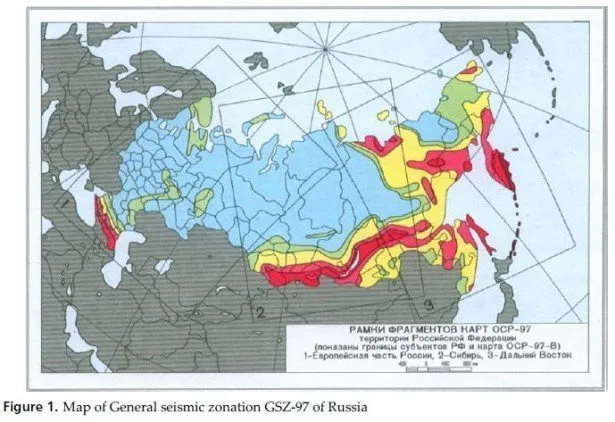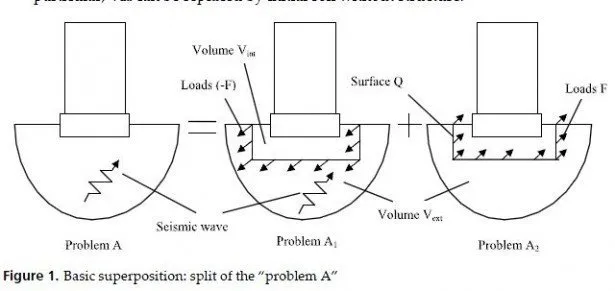For a bridge on or over I-24 in western Kentucky, the potential of an embankment slope to displace during a designated earthquake event is assessed using the two-dimensional limit equilibrium stability analysis. During the seismic vulnerability evaluation of each embankment, the possibility of occurrence of either circular or wedgeshaped slope failure [11] is investigated and the one that results in the lesser C/D ratio is considered in the ranking process. Kh equals to 2/3 of the PGA. The ranking and prioritization procedure of the embankments is based on three main parameters: (1) seismic slope stability (C/D)min.
ratio, (2) embankment displacement, and (3) liquefaction potential at the embankment site. For embankments with (C/D)min. ratio against sliding1.0, estimation of how far the embankment actually displaces during the ground excitation is necessary. Hence, the displacement of the embankment is calculated. The maximum acceleration (Amax.) for a specified seismic event is identified for a designated embankment. For slope displacement to occur, the maximum acceleration must exceed the acceleration causing yielding in the embankment slope (Ay). The (C/D)min. ratio is calculated for each embankment, and is used to assign a rank for each embankment relative to the other embankments along I-24 in western Kentucky.
Assuming that the yield displacement is equal to Khf, which corresponds to the (C/D)min.
ratios for all the possible failure cases, the resulting Yield Factor (Y) is estimated as the ratio of Ay/Amax, where Ay is the acceleration causing yielding in the embankment slope and Amax. is equal to the PGA. The displacement of the slope with a specified PGA exceeding the Ay is estimated. At intervals for which the PGA exceeds Ay (Y is less than 1.0), the occurrence of slope displacement is expected. Decreasing Ay results in increasing the magnitude of the embankment displacement, correspondingly. As the seismic slope stability of an embankment decreases, a larger displacement is expected, providing a stronger indication of an at-risk embankment than that obtained from the (C/D)min. ratio analysis. One advantage of this methodology is that the analysis eliminates the misleading condition of how to assess an embankment that has (C/D)min. ratio1.0, and instead forces a consideration of the possible embankment displacement. The vulnerability rating for a designated soil is based on quantitative assessment of liquefaction susceptibility and the anticipated magnitude of the acceleration coefficient [1]. Bridges subjected to low liquefaction potential shall be assigned a low vulnerability rating.
It is stipulated that it is not necessary to calculate liquefaction potential for the bridge sites, which are required to resist a seismic acceleration of less than 0.09 g [1]. The majority of the area surrounding the fault in the New Madrid Seismic Zone lies on fluvial and alluvial deposits and sandy soils. Defining the liquefaction potential is a matter of considerable concern during the seismic assessment of bridges and their embankments in this region. Western Kentucky encompasses several major bodies of water, including the Ohio River, Mississippi River, Barkley Lake, and Kentucky Lake.
These bodies of water cause the saturated soils within the area to be highly susceptible to liquefaction potential. The proximity to these four bodies of water necessitates particular concern when examining the liquefaction potential for bridge sites along I-24 in western Kentucky.
The method to calculate the liquefaction potential is dependent on the availability of the soil boring logs. Whenever the boring logs of an embankment site along I-24 in western Kentucky are not available, the susceptibility of an embankment soil to liquefaction is classified in one of three ways. High susceptibility is associated with saturated loose sands, saturated silty sands, or non-plastic sands. A bridge that crosses a waterway is often constructed on loose saturated cohesionless deposits that are most susceptible to liquefaction. Moderate susceptibility is associated with medium dense soils, such as compacted sand soils. Low susceptibility is associated with dense soils.
Whenever the boring logs of an embankment site along I-24 in western Kentucky are available, the liquefaction potential of the bridge site is accurately determined by the method developed by Seed et al. [9, 10] and reported earlier in this Chapter. This method includes the following four steps: (1) determination of time history of shear stresses induced by the earthquake ground motion; (2) converting the time history to an equivalent number of stress cycles; (3) calculation of the cyclic shear stresses required to cause liquefaction in the same number of stress cycles; and (4) judging the liquefaction potential by comparing the shear stress induced during the earthquake with that required to cause liquefaction.
Liquefaction potential of few embankment sites along I-24 in western Kentucky is estimated using standard penetration tests (SPT) provided by the Kentucky Transportation Cabinet, Department of Materials and Geotechnical Testing. For the rest of the bridge embankments along I-24 in western Kentucky, any judgment of the liquefaction potential is solely based on the surrounding soil type. The soil type is obtained from the USGS and USDA maps. A detailed method to predict the liquefaction potential is shown in Zatar et al. [12, 13].



